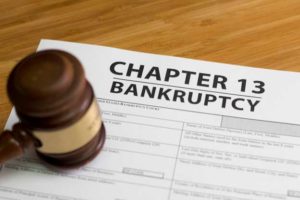
The discharge of qualifying debts is generally the most important part of bankruptcy protection. But what about a borrower whose debts are not eligible, are unlikely to be discharged, or have collateral they’re not prepared to lose? Should you still file bankruptcy if your particular debts may not be discharged? The answer is often yes. Here are five ways you may still find relief.
1. Some Discharge Frees Up Money
Even if you can’t get rid of all your debts, you may be able to get rid of enough to make a big difference. Student loans, for instance, are hard to discharge. But if you struggle with student loans, you may also struggle with other payments, including credit cards, vehicle loans, utilities, rent, or medical bills. Could the discharge of these other debts make your student loans manageable? If so, bankruptcy can still help.
2. You May Get Balances Lowered
Chapter 13 bankruptcy offers a unique compromise between full discharge and full payment. If you hold a secured debt — such as a vehicle — that you owe more on than it’s worth, you may be able to use what’s known as a cramdown.
Cramdown is the process of reducing the secured portion of the balance owed. The amount reduced can then be included in unsecured debts (rather than tied to your collateral), some or all of which may be discharged at the end of the repayment plan. While you still pay much of the loan, you can get relief both now and later.
3. Repayment Plans Are Income-Based
Chapter 13 repayment plans are designed to be affordable for the filer even before any debts are discharged. To this end, they are based on your income and take into account the cost of living. A person struggling with rising debts in comparison to their income can use this chance to get a single, manageable monthly payment for several years. And this payment won’t rise unless their circumstances change.
4. You Can Stretch Out Debts
Both personal and business repayment plans allow you the opportunity to stretch out shorter debts to the fullest extent allowed by bankruptcy law.
For personal bankruptcy, this is usually either three or five years. This may not sound like a very long time, but extending things like debts to utilities, back rent, or medical bills by up to five years can significantly reduce monthly obligations. Business bankruptcy has an even longer timeline that can include things like mortgage loans.
5. It Comes With a Stay
Bankruptcy comes with an often overlooked protection: the automatic stay. This order notifies creditors that they must stop all attempts to collect on debts that are involved in a bankruptcy case. These collection efforts include garnishments and levies, utility disconnections, repossessions, foreclosures, phone calls, and even evictions.
This stay is temporary, but it buys you time to fix immediate problems and determine how best to protect your assets. Some creditors will be allowed to have the stay lifted and continue with collections quickly, but others will have to wait. The chapter you choose, the debts you include, and their final eligibility determine when specific stays are lifted. The temporary stay lifts completely when your case closes.
Where Can You Start?
Want to know more ways you might find relief from your debt issues no matter what can or cannot be discharged fully? Start by meeting with the team at Wiesner & Frackowiak, LC. We work with Kansas and Missouri debtors to help them get the most benefit from bankruptcy as well as dealing with other ways to find debt relief. Call today to make an appointment.
